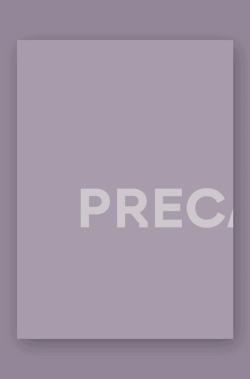
RECLAIM Domestic Actions
a+t 41
ISSN 1132-6409
ISBN 978-84-616-4137-6
160 Páginas
Inglés/Español (23.5 x 32 cm)
Versión impresa: 25.00 €
Versión online: 14.00 € Cómo leer las versiones online
Impresa + online: 29.00 € Cómo leer las versiones online
Seleccione la versión
- Versión impresa: 25.00 €
- Versión online: 14.00 €
- Impresa + online: 29.00 €
- Cómo leer las versiones online
Destino
Calcule los gastos de envío para esta publicación a su país
También puedes acceder a esta publicación suscribiéndote a a+t Biblioteca Online
 Reclaim - Domestic Actions contiene 54 acciones que descarnan y reducen la vivienda a su esencia. Le han quitado peso, subsanado errores previos y retirado la grasa de prejuicios estéticos que cubría hasta ahora este tipo de intervenciones.
Reclaim - Domestic Actions contiene 54 acciones que descarnan y reducen la vivienda a su esencia. Le han quitado peso, subsanado errores previos y retirado la grasa de prejuicios estéticos que cubría hasta ahora este tipo de intervenciones.
Reclaim - Domestic Actions agrupa estas acciones en tres procesos Re-: Reduce (reducir), Retrieve (recuperar) y Remove (eliminar), que se refieren a opciones de renuncia y despojamiento sobre lo existente. La función de habitar se contempla renovada, tras haber sido sometida a una serie de ajustes materiales, formales, técnicos y económicos.
Y añade un cuarto proceso: Simulate (simular), valioso compañero para tiempos de crisis.
El volumen forma parte de la serie RECLAIM.

Extracto del artículo de María González y Juanjo López de la Cruz en este número:
"En 1968 el artista norteamericano John Baldessari establecía sus Términos más utilizados para definir trabajos creativos en el arte, plasmando con pintura acrílica sobre un lienzo las que, según él, eran las palabras capaces de explicar esta práctica en el siglo XX. En realidad él no las pensó, ni siquiera las pintó, se limitó a buscar en libros de arte cuáles eran las acciones más repetidas y, a continuación, se las dictó a un cartelista que fijó en la tela aquellos verbos, como una versión alternativa de la historia del arte; pura acción, acaso la única certeza que el arte había producido en el devenir de ese siglo.
La arquitectura podría ser explicada de un modo parecido, a través de las acciones que convoca, más allá de intenciones o retóricas. Un proyecto de arquitectura puede enunciarse como un catálogo de acciones, sucesión de actuaciones establecidas en un lugar concreto que desencadena otra serie de actos por parte de los habitantes; una suerte de ley de Newton por la que las acciones desplegadas por la arquitectura conllevan reacciones ciudadanas..."
RESEÑAS
“Son múltiples las lecciones que pueden extraerse de cada proyecto a través de la exhaustiva documentación aportada, característica de a+t” John Hill, Archidose











 He leído y acepto las
He leído y acepto las 


